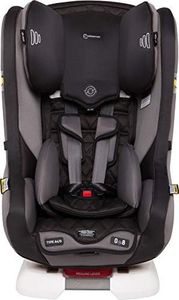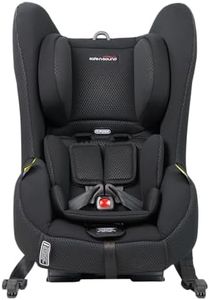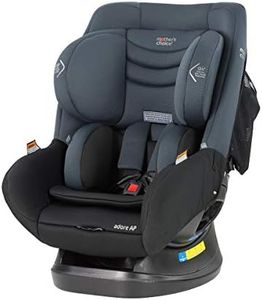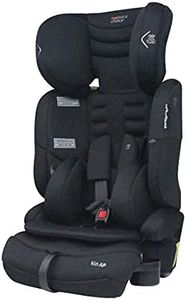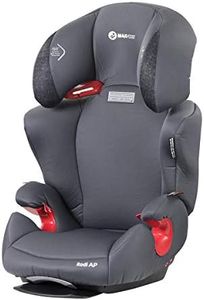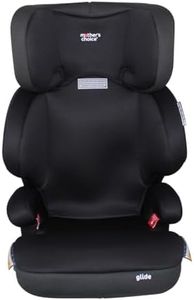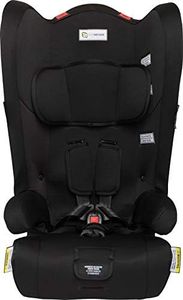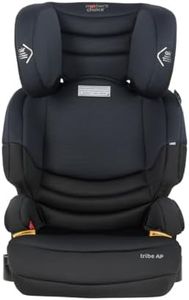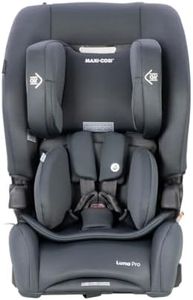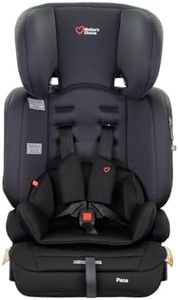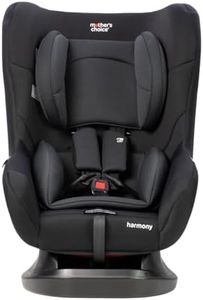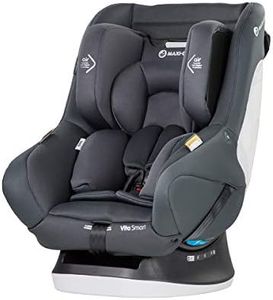We Use CookiesWe use cookies to enhance the security, performance,
functionality and for analytical and promotional activities. By continuing to browse this site you
are agreeing to our privacy policy
10 Best Rated Car Seats
From leading brands and best sellers available on the web.Buying Guide for the Best Rated Car Seats
When choosing a car seat, the most important consideration is your child's age, weight, and height, as well as ensuring the seat meets safety standards. Car seats are designed for different developmental stages, and using the correct type is crucial for your child's safety during every car journey. Always prioritize safety, prioritize ease of use, and make sure the car seat is compatible with your vehicle. Reading the manual and understanding how to correctly install and use the seat are also essential for maximizing protection.Type (Rear-Facing, Forward-Facing, Booster)The type of car seat refers to how it is designed to support children at various growth stages: rear-facing for infants and toddlers, forward-facing for older toddlers and young children, and booster seats for children who have outgrown harness seats. This is important because each type offers specific protection levels tailored to your child's size and needs. Generally, rear-facing seats are safest for the youngest children, then gradually transitioning to forward-facing and finally to boosters as they meet the height and weight limits. Always use the seat type appropriate for your child's current stage for optimal safety.
Weight and Height LimitsWeight and height limits indicate the range within which the seat effectively protects a child. This spec is crucial because using a seat outside of these limits can compromise safety. Seats are divided by limits, such as infant seats (typically up to around 30-35 pounds), convertible and forward-facing seats (up to 65 pounds), and booster seats (up to around 100-120 pounds). Choose a seat that fits your child's current measurements, and be prepared to move to a new seat as they grow to always stay within the recommended limits.
Installation System (LATCH vs. Seat Belt)This refers to how the car seat attaches to your vehicle—either through the LATCH (Lower Anchors and Tethers for Children) system or the standard seat belt. LATCH is generally easier and reduces installation errors, but has weight limits. Seat belt installation is available in all vehicles but may be a bit trickier. Ensure your vehicle has the needed anchors if you plan to use LATCH. Choose the system you are most comfortable installing correctly, as proper installation is key to safety.
Ease of Installation and UseA seat that's hard to install or adjust might not protect your child as intended. This spec covers how intuitive the seat is, how easily you can tighten or loosen straps, and how straightforward it is to move between vehicles. Simple installation and clear instructions can make a big difference, especially if you'll be moving the seat often. Consider your confidence with car seats—if you feel unsure, look for models with clear labeling and easy-to-follow guides.
Safety Ratings and Crash Test ResultsThese ratings show how well the seat performed in government and third-party crash tests, often going beyond minimum safety standards. Higher ratings suggest better protection in real-world scenarios. These ratings are usually shared by trusted agencies and can be found on the seat or in its documentation. If safety is your top priority, focus on seats with strong safety records and ratings.
Adjustability and Comfort FeaturesAdjustability deals with how you can tweak the seat to fit your child as they grow, like harness height and recline positions. Comfort features might include extra padding, head support, or ventilation. These aspects matter for long rides and for fuss-free daily use. When picking, think about your child's comfort and whether you'll need to adjust often as they grow.
Size and Fit in Your VehicleCar seats come in different shapes and sizes, and not all of them will fit comfortably in every car, especially if you have a compact vehicle or need to fit multiple seats side by side. Ensuring the seat fits properly in your vehicle without blocking access to seats or doors is vital. Before purchasing, measure your back seat and check manufacturer recommendations about fit.
Ease of CleaningKids can be messy, so the ability to easily clean covers and padding is especially useful. Some car seats have machine-washable covers, while others may need hand washing. If you anticipate frequent spills or accidents, opt for a seat with removeable, washable covers for easier maintenance.

